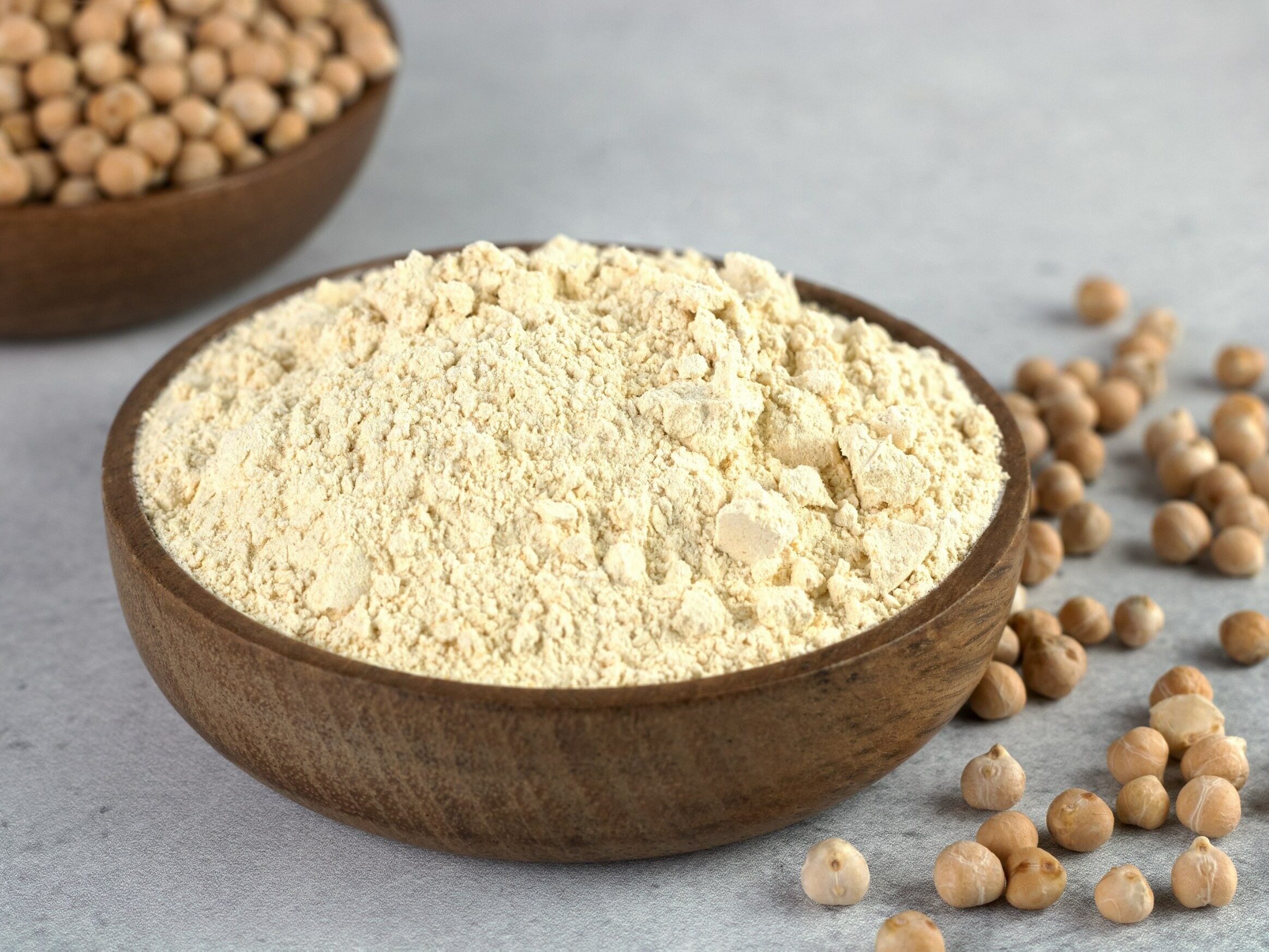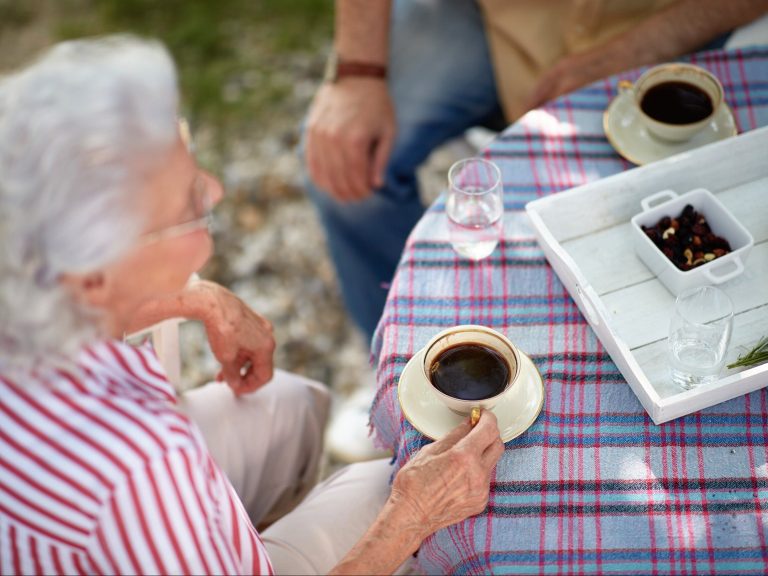Chickpea flour – properties, taste, health benefits, uses

Chickpea flour, also known as chickpea flour or besan, is a gluten-free product. It is made from ground chickpeas. It has high nutritional values and is widely used in the kitchen. Chickpea flour is most often used in Indian cuisine. It is becoming very popular in Poland, including: among people who follow a gluten-free diet (e.g. people suffering from celiac disease). We show you how to make chickpea flour at home. Check the nutritional values and properties of chickpea flour.
- What does chickpea flour look and taste like?
- Chickpea flour – nutritional values
- Chickpea flour has health properties
- The use of chickpea flour in the kitchen
- Chickpea flour is used in cosmetics
- How to make chickpea flour? Recipe
- Recipe: Chickpea flour
Chickpea flour is a naturally gluten-free product that is worth including in your diet. People suffering from celiac disease and people hypersensitive to gluten should, however, know that naturally gluten-free chickpea flour may contain trace amounts of gluten if it was produced or stored near wheat flour and other products containing gluten. The popularity of chickpea flour is growing every year, and we can buy it not only in health food stores, but also in most large supermarkets and make it ourselves at home. It is worth learning more about the nutritional value, health-promoting properties and use of chickpea flour, because this product has an exceptionally high nutritional potential and unique taste.
What does chickpea flour look and taste like?
Chickpea flour has a slightly nutty flavor and yellowish color. It can be used as a stand-alone product or as an addition to other flours, e.g. wheat, corn, rice and buckwheat flour.
Chickpea flour – nutritional values
Chickpeas (chickpeas, cowpeas) are a plant from the Middle East that is the main ingredient of hummus. Chickpea flour contains protein, dietary fiber, carbohydrates, fat, B vitamins, folic acid, potassium, phosphorus, zinc, iron, calcium and magnesium. Moreover, chickpea flour (chickpeas) has a low glycemic index, so it can be consumed by diabetics.
Particularly noteworthy is the high protein content in chickpea flour, which is twice as much as in wheat flour.
Chickpea flour has health properties
Chickpea flour has numerous health properties. It is a valuable source of active compounds that have anti-inflammatory, antifungal and antioxidant properties. Moreover, it regulates insulin secretion, helps reduce blood cholesterol levels and regulates the functioning of the digestive tract. The health-promoting properties of chickpea flour include, among others: phytosterols, phenolic acids, carotenoids and isoflavonoids.
People who regularly consume chickpeas are less likely to develop serious lifestyle diseases, such as hypertension, diabetes, atherosclerosis and coronary heart disease.
The use of chickpea flour in the kitchen
Chickpea flour is a traditional product of Indian cuisine, which is used, among others, for making pies, sweets and snacks. However, we can also use it when preparing traditional Polish dishes. Chickpea flour can be added, for example, to soups, sauces and breading, as well as bread, rolls and sweet baked goods. What is important – chickpea flour can be used as an egg replacement.
Chickpea flour is used in cosmetics
Chickpea flour has numerous cosmetic properties. It can be used, for example, as a face or body scrub, a moisturizing or cleansing mask and a dry shampoo. Chickpea flour gently smoothes the skin, removes dead skin, helps clean clogged pores, has a positive effect on hair health and helps prevent dandruff.
How to make chickpea flour? Recipe
You can easily make chickpea flour yourself by roasting the chickpeas in a dry pan or in the oven and grinding them after cooling in a blender or coffee bean grinder. Chickpea flour should be stored in a closed container in a dry and cool place. The wide use of chickpea flour makes it worth taking an interest in this healthy product and including it in your diet.
Recipe: Chickpea flour
Making chickpea (chickpea) flour is not difficult
- Category
- Addition
- Type of cuisine
- Vegetarian
- Preparation time
- 1 hour
- Number of servings
- 1
Ingredients
- 2 cups of dry chickpeas
A method of preparing
- Roasting chickpeasPour the chickpea seeds into a dry pan. Roast them over medium heat, stirring them from time to time to prevent them from burning. Do this until you feel a slightly nutty smell. rnOptionally, you can roast the chickpeas for about 10 minutes in an oven preheated to 180-200 degrees Celsius.
- Cooling the chickpeasAfter roasting the chickpeas, leave them to cool completely.
- Grinding chickpea seedsDivide the cooled beans into 3 parts and grind them in a strong blender. You can also grind them in smaller batches in a coffee grinder.
- Sifting the flourSift the flour and if there are larger parts left on the sieve, grind them again. Pour the prepared flour into a dry jar.
Sources:
-
Lipowski J., Jasinska U., Products from seeds of less known legumes, Przemysł Fermentacyjny i Owocowo-Warzzywa, 49.7, pp. 36-38, 2005
-
National Center for Nutrition Education NIZP PZH – National Research Institute
-
Physicochemical and structural impact of CMC-hydrocolloids on the development of gluten-free foxtail millet biscuits, DOI: 10.1016/j.heliyon.2023.e17176






